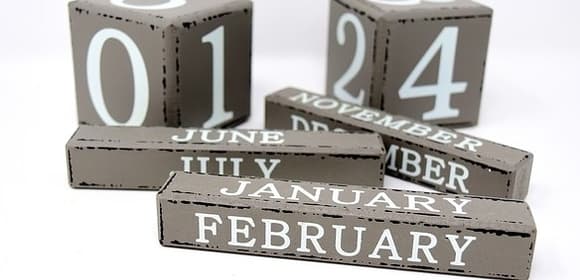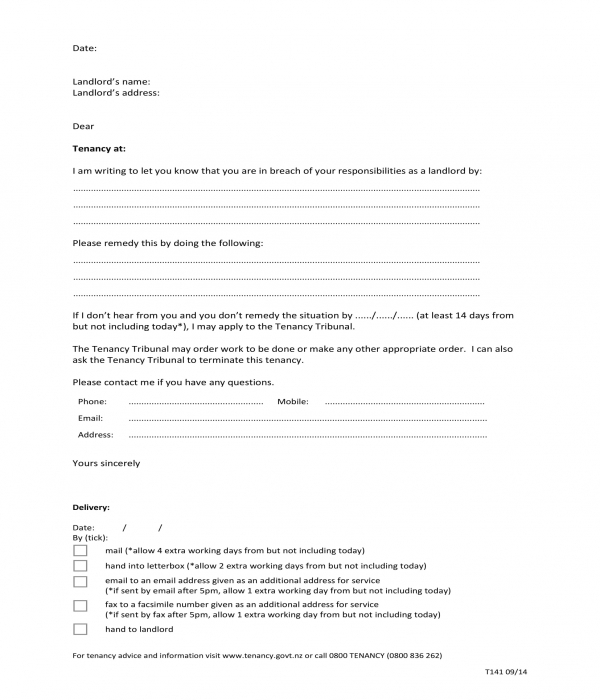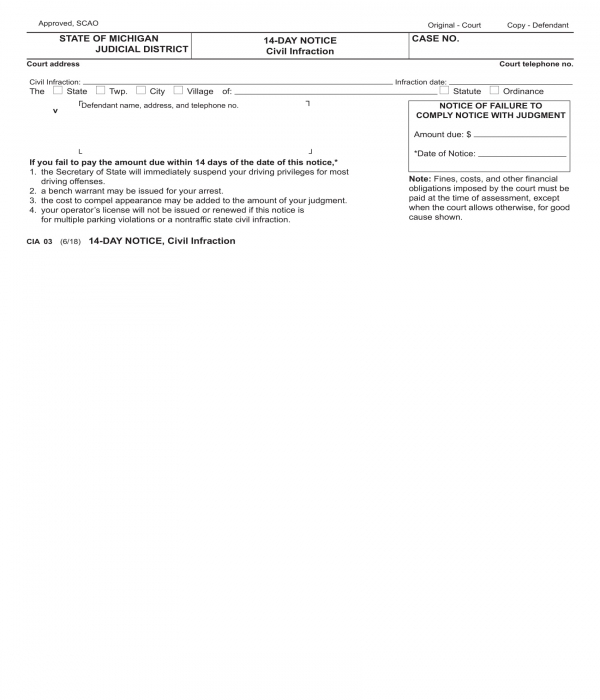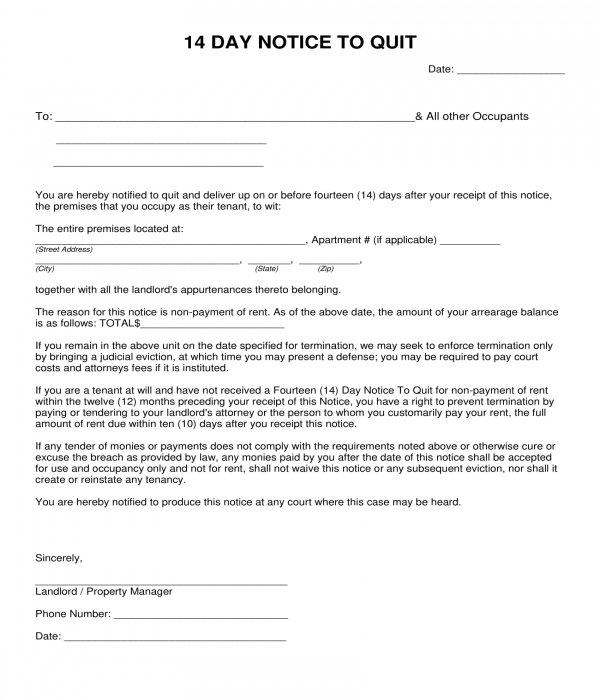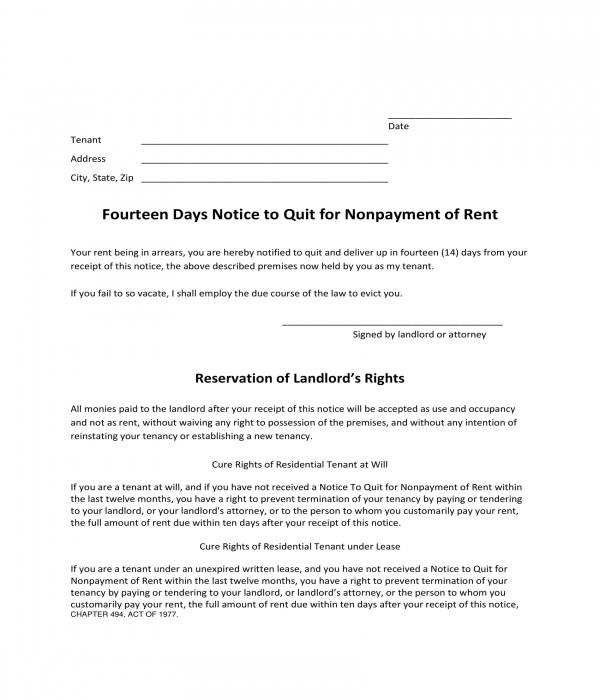Receiving any type of notice form should prompt an individual to take action immediately and not wait until the last day of the notice will arrive. This is important especially if the notice is in lieu of a legal preceding as well as a tenancy agreement which was signed by the recipient. One of the most common notice forms which are used for these incidents and needs are known as 14-day notice forms.
14-Day Notice to Remedy Form
What Is a 14-day Notice Form?
A 14-day notice form is specifically used for informing a party about an event or an activity which will take place after 14 days starting on the day that the other party received the form. This document is often provided by landlords to their tenants especially during a lease termination or eviction wherein the tenant is either required to pay his rental balance or will have to vacate the landlord’s premises within the period of 14 days. Moreover, 14-day notice forms are also used by legal authorities for informing an individual involved in a case about the preceding as well as about certain violations and penalties that he will have to deal with.
Why Use a 14-day Notice Form?
When a party or an organization uses a 14-day notice form, they are ensuring that they will be able to communicate to the recipient of the notice. Maintaining proper communication is vital especially if there are contract agreements involved. Another reason for having the 14-day notice form is that it will document who the involved parties are and will serve as proof of their need for being accountable for their respective roles.
In addition, a 14-day notice form can also help in informing the recipient about the consequences and the penalties of his actions if he ever fails to commit to his roles and meet the requirement of the law regarding the subject of the notice. For the sender of the 14-day notice form, he should include a list of call-to-action steps or procedures in the notice to engage the recipient in completing the requirements. Also, the contact information of the sender must be incorporated into the notice form which will be for allowing the recipient in reaching out for inquiries and questions in lieu of the notice.
Examples of 14-day Notice Forms
Since 14-day notice forms are used for two common subjects: one for legal matters and one for a tenancy issue, the sender of the notice should ensure that he is using and sending the right type of form to his recipient. Below are some of the examples of 14-day notice forms to consider using for varying intents of a notice sender:
14-Day Notice Civil Infraction Form – Civil infractions are cases wherein the violator will be required to pay fines as penalties and not to be a subject for any type of jail-time. Common civil infraction violations are observed in the streets specifically traffic offenses such as over-speeding and parking a vehicle in a no-parking slot. Although civil infractions revolve in requiring the violator in paying fines, there are also some cases which can arise to a revocation of a license permit depending on the frequency of the violation and the rules of the State.
For this, a 14-day notice of civil infraction form will be used by the court or the authorities of the State to inform a violator about his need to provide the payment within fourteen days. The violator will also be referred to as the defendant of the case while the court or the law will be the complainant. In this type of notice form, the case number assigned for the case of the civil infraction will be indicated as the first portion of the form with the State or the court where the case was filed, and the approval of the authorized organization agency who will regulate the case and the preceding.
14-Day Notice Civil Infraction Form
The address of the court, the description of the civil infraction, the date when the infraction was executed, and the indication of whether the law which was violated was statute or an ordinance will be disclosed in the notice form. In addition, the amount of the due or the total amount to be paid by the defendant will be stated in the notice along with the date when the notice was served. The actions which will be taken for the failure of the defendant to pay the dues within the defined period in the notice are also necessary to be enlisted in the form such as the possible suspension of the defendant’s privileges, the filing of a bench warrant of arrest, additional costs to be paid by the defendant for his judgment, and the future declination of the authorities for renewing his documents due to the violation.
14-Day Notice to Quit Form – This is the document to be used by landlords and property owners for their renters and tenants whom they want to be evicted from their properties within a period of fourteen days. The 14-day notice to quit form is a direct document to send for informing the tenants of a residential and even a commercial property that they have been terminated from the lease, and that they have no other choice but to vacate the space that they have rented. The pieces of information which are stated in the first portion of this type of 14-day notice form are the date when the notice was given to the tenant and the names of the tenants along with their addresses and contact information.
The body of the notice form is where the landlord will be able to disclose and define the purpose of the notice which is basically for informing the tenants about the eviction. This portion or section should indicate the complete and exact address of the premises where the tenant should be vacating, and the total amount to be paid by the tenant. Moreover, the reasons of the landlord for terminating the tenants should also be indicated in this section so that the tenants will be able to acknowledge why they are evicted and whether it is due to a violation or due to the needs of the landlord to use the property either for renovations and other events.
14-Day Notice to Quit Form
The actions which will take place if ever the tenant chooses to remain the property of the landlord after the stated period of the notice will also be discussed in the form. This includes having to bring the case to a judicial eviction which may require the tenant to pay for his own court costs and the attorney fees since he must present in the court as a defendant of the case along with his hired attorney.
To complete the 14-day notice to quit form, the landlord must affix his name and signature at the signature block incorporated after the body of the form. This will also have the phone number and the date when the landlord has signed the notice form.
14-Day Notice to Quit for Nonpayment of Rent Form – Although this type of 14-day notice form has the same objective to the aforementioned notice to quit form, it has other sections which are relevant processing the case of the tenant and the landlord. This form contains three sections which are all significant to be agreed and acknowledged by the involved parties of a lease agreement. The first section is intended for discussing the details of the 14-day notice and for identifying the parties: the landlord being the sender of the notice, and the tenant is the recipient of the notice.
14-Day Notice to Quit for Nonpayment of Rent Form
The second section of the 14-day notice to quit for nonpayment of rent form is for laying out the reservation of landlord’s rights. This is for informing the tenant about the landlord’s intent in maintaining and upholding his full legal rights in lieu of the lease and the notice. Some of the basic rights of the landlord include being able to accept and use the amount to paid by the tenant for occupancy and use, and not for renting the property. In addition, this section will also be for defining the cure rights of specific tenants such as those which are referred to as tenants-at-will and tenants who have expired written lease contracts.
The last section of the form is the “proof of delivery” section. This is essential for documenting that the landlord has delivered and served the notice to the tenant. The method of the landlord’s delivery will also be specified whether he handed a duplicate of the notice form to the tenant personally, slipped the notice under the doorstep of the tenant, taped a copy of the notice on the tenant’s door, or mailed the notice to the tenant using an authorized mailing courier service provider.
In addition, there are circumstances when the complainant or the person who is filing the notice is not the one who is sending the 14-day notice form to the defendant or recipient. This is why it is important that a service acknowledgment form will be completed and be signed by the person delivering the notice. This will serve as a proof that the notice was successfully delivered and was received by the intended notice recipient.
Related Posts
-
60-Day Notice to Vacate Form
-
FREE 3+ Five-Day Notice Forms in PDF | MS Word
-
FREE 6+ Compliance Notice Forms in PDF | MS Word
-
FREE 5+ Notice to Enter Forms in PDF | MS Word
-
FREE 3+ Advance Beneficiary Notice Forms in PDF | MS Word
-
FREE 7+ 10-Day Notice Forms in PDF | MS Word
-
FREE 3+ Payroll Change Notice Forms in PDF
-
60 Day Notice Form
-
FREE 6+ Sample Notice of Election Forms in MS Word | PDF | Excel
-
FREE 5+ Sample Pull Notice Forms in MS Word | PDF
-
Notice of Exemption Form
-
FREE 7+ Sample Notice of Removal Forms in MS Word | PDF
-
FREE 5+ Parent Handbook Acknowledgement Forms in PDF | MS Word
-
FREE 5+ Notice to Owner Forms in PDF | Ms Word
-
FREE 6+ Sample Preliminary Notice Forms in MS Word | PDF
